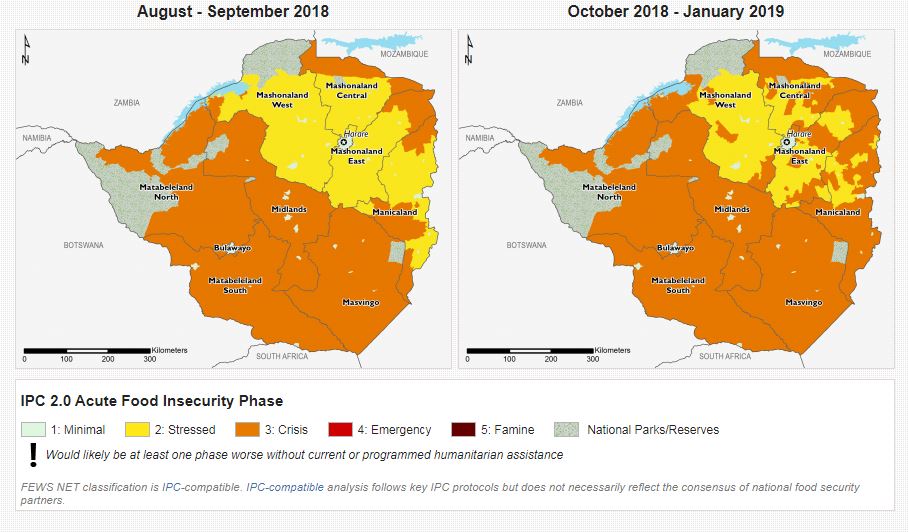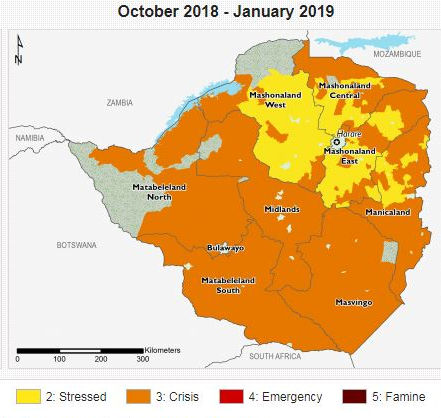A US government NGO, Famine Early Warning Systems Network, has warned of an acute food insecurity crisis to hit Zimbabwe from about October this year to January next year.
In an update this month the organisation said:

Widespread Crisis (IPC Phase 3) acute food insecurity expected throughout the lean season
Key Messages
- An increasing number of poor households in deficit-producing areas in the south, west, and extreme north have depleted their food stocks in August and are in Crisis (IPC Phase 3). These food security outcomes are expected to persist through March 2019. In typical surplus-producing areas in the north and localized high-producing areas in other parts of the country, poor households’ food stocks are declining faster than normal and many are facing challenges meeting their basic livelihood needs. Stressed (IPC Phase 2) outcomes are likely through early 2019 in these areas, though some poor households will be in Crisis (IPC Phase 3).
- Maize grain supply is erratic or unavailable on informal markets in some deficit-producing areas, including Matebeleland North and South provinces. Although low supply of maize grain and higher supply of maize meal is typical in these areas during the lean season, the low availability of maize grain is occurring earlier than usual. However, prices for both maize grain and maize meal are generally stable: the retail price of a kilogram of maize grain in July across FEWS NET’s sentinel sites was around $0.29, similar to June and roughly 13 percent below average. In local currency, maize grain prices are also fairly stable. Marginal price increases are expected throughout the lean season.
- Poor households are engaged in typical livelihood activities, though income from these activities is lower than normal. Crop sales are limited due to low production, and casual labour opportunities and labor rates are lower than normal due primarily to liquidity challenges. Furthermore, livestock conditions in arid areas are declining as a result of poor pasture and water and it is expected income from livestock sales will be lower than normal. Although maize meal and maize grain prices have remained stable, prices for other food and non-food items continue to increase. With lower than normal income and higher prices for many food and non-food items, poor households’ access to food is below average.
- There is an increased likelihood of an El Niño event occurring during the 2018-2019 rainy season in Southern Africa, which is likely to result in below-average rainfall across many areas, including Zimbabwe. This is expected to negatively affect crop and livestock production, as well as lower the availability of agricultural labor, a key source of income for poor households during the lean season.



Back to top